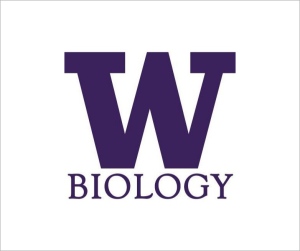Introducing our cohort of first-year grad students! In each of the next few posts, we’ll be featuring several of the students from the entering cohort of 2015. The department has such a wide range of research, it’s impossible to fit it all into one post. Congrats on making it through your first quarter in the program!

Amber Hageman received her B.S. in Plant Biology from the University of Washington and is happy to be continuing her graduate studies here. Her research interests are focused around how plants respond to changing environmental conditions and the molecular mechanisms underlying these processes. During her first year, she is rotating in the labs of Jennifer Nemhauser, Liz Van Volkenburgh, and Soo-Hyung Kim (SEFS). She is looking forward to exploring the diverse array of plant biology topics which are encompassed by the department and to refining her research interests over the the next year.

Luke Weaver is a member of Greg Wilson’s lab. I was born and raised in Broomfield, Colorado and completed my undergraduate degree at Colorado State University in Fort Collins. I am interested in understanding the mechanisms driving mammalian evolution before and after the Cretaceous-Paleogene extinction (the extinction that wiped out the dinosaurs). In particular, I am interested in understanding the decline of multituberculate mammals (the most successful mammalian lineage during the Mesozoic) and the rise of plesiadapiform primates in the early Paleogene of Western North America. (Luke’s site)

Kelsie Morioka is interested in the evolution of flower morphology and plant-pollinator interactions. She is in Verónica Di Stilio’s lab, where she is currently working to elucidate the molecular mechanisms underlying the evolution of wind pollination in Thalictrum (meadow rues). She is impressed by how welcoming the department has been and is looking forward to her time at UW. (Photo (c) 2011 Joan Avise, UC Irvine link)

Ana Maria Bedoya is interested in the evolution of plant adaptations to the ecosystem. As a Master’s student in Colombia, her country of origin, she did field work for two years and found this experience to be fun and fundamental for the understanding of biological processes and for the formulation of research questions. After investigating the evolution of the aquatic habit in Neotropical species of Ludwigia (Onagraceae) using phylogenetic and anatomical data, she is now interested in understanding the evolution of aquatic ecosystems in Northern South America, and the diversification patterns in groups of plants with representatives that live in such conditions.
The strong history of plant phylogenetics and phylogeography research in the Olmstead Lab and the interdisciplinary research environment within the Biology Department, were the reasons why Ana Maria chose the UW to pursue her Ph.D. She couldn’t be happier in the academic setting and in Seattle!
Meera Lee Sethi is interested in understanding how climate change will affect biotic interactions. Because she: a) is a sucker for punishment and b) likes drawing arrows, she is particularly curious about what might happen within multitrophic networks where interacting species can affect each other both directly and indirectly. She is still figuring out the ideal system in which to explore this confusing question, but is most likely to join other members of the Hille Ris Lambers lab in getting on her hands and knees to study the plant communities growing on the flanks of Mt. Rainier (and hopefully some of their associated insect and microbe communities as well!). Meera is excited to have survived her first quarter, which seemed mostly to be made up of teaching, grant writing, and finding new ways of introducing herself to others. She feels very lucky indeed to be part of the charming and supportive community that is UW Biology. (More from Meera)
Tune in next time to hear about bugs, and brains, and birds!


